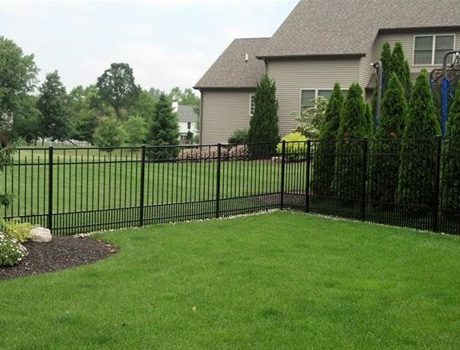What to Do If Your Fence Starts Leaning After Heavy Winds
What to Do If Your Fence Starts Leaning After Heavy Winds
A straight fence one day, a tilted eyesore the next: heavy winds can do a number on your fence in no time. Persistent wind may leave your fence leaning at awkward angles, making your property look neglected and leaving gaps in security and privacy. So what should you do? Can it be fixed, or is a full replacement necessary?
The answer depends on what caused the lean, how severe the tilt is, and the overall condition of your fence. At Fence Masters, with over 40 years of experience and more than 50,000 fences installed across Chicagoland and Northwest Indiana, we’ve seen many of these scenarios. In this post, we’ll walk you through why fences lean after wind damage and how to determine the best course of action.
Why Is My Fence Leaning?
Fences may lean for several reasons, but leaning due to wind damage often reveals underlying structural weaknesses, such as:
- Shallow posts: Fence posts should be buried to a depth of at least ⅓ of their aboveground height and at least 6 inches below the frost line. Shallower installations shift more easily during storms or due to pressure from freeze-thaw cycles.
- Weak or rotted posts: Wooden posts deteriorate over time, especially when exposed to moisture. Once rot sets in, posts won’t be able to support the fence structure.
- Poor soil conditions: Clay-heavy or poorly drained soil can increase post movement and instability.
- Age and wear: Fences older than 15-20 years may lose some structural integrity, making them more vulnerable to wind.
Heavy snow and ice buildup during Midwestern winters can add weight to fence panels, compounding any existing leaning problems. Combined with wind, this increases the likelihood of structural failure.
How Can I Fix My Fence After Wind Makes It Lean?
Once you’ve identified a leaning fence, assess the damage before deciding on repairs or replacement.
Minor Lean
If the tilt is only a few inches and the posts remain sturdy, you can often fix the issue with:
- Panel realignment: Adjust shifted panels back into position and secure them properly.
- Post reinforcement: Add concrete around the base or install braces for extra support.
- Replace damaged pickets: Swap out broken or cracked boards rather than replacing the entire fence.
Regular maintenance, such as sealing wood and tightening fasteners, also helps prevent future leaning.
Severe Lean or Multiple Damaged Sections
If large sections are leaning significantly, posts are rotted, or the fence is over 15 years old, replacement may be a smarter investment. Signs you need a new fence include:
- Multiple heavily-leaning sections along the fence line
- Wood rot or similar damage in several posts
- Large cracks, missing panels, or broken supports
- Fences nearing the end of their expected lifespan
A new fence provides long-term stability and eliminates the need for repeated repairs.
It’s Not Too Late: Keep Your Fence From Falling
Don’t wait for a leaning fence to collapse completely. The longer you delay repairs, the more extensive (and expensive) the damage typically becomes. Whether you need reinforcement or a full replacement, Fence Masters can help you make the best choice for your property.
With decades of experience, factory-direct pricing, and a commitment to outstanding customer service, we’ve earned a reputation as one of the largest fence companies in the Midwest. Our talented installation contractors work efficiently to deliver high-quality results every time. Contact Fence Masters today and protect your property with a fence that is truly built to last.








